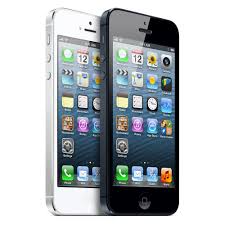The Future of 3D Printing (and Elliot)
 I don’t know if 3D printing will change the world, but I do know that it’s helping Elliot start up a new business in Berlin.
I don’t know if 3D printing will change the world, but I do know that it’s helping Elliot start up a new business in Berlin.
Elliot’s a good designer. He’s designed everything from 3D videos to websites to room dividers to packaging. But he has a special knack for furniture – especially furniture designed on a computer.
Using 3D software Elliot designed the table in the photos. He then built one, using a numerical controls (NC) laser to cut the wood and a 3D printer to create the red resin joints. (You can get them in any color you want).
The design incorporates both additive and subtractive manufacturing. Elliot creates the tabletop by cutting wood away – it’s subtractive. He creates the joints in a 3D printer by adding one layer of resin on top of another repetitively.
Elliot has now rented a studio in Berlin and is starting up a furniture design and manufacturing business, under the brand name Studio Elliot White. None of this would have been possible without 3D design software and printers.
So, is Elliot a harbinger of things to come? Well, maybe. A few days ago the New York Times had a lively discussion on the topic in  its Room For Debate section. Here are some highlights along with my ruminations.
its Room For Debate section. Here are some highlights along with my ruminations.
Big picture – the grand vision has been that we will all have 3D printers in our homes. We could order Elliot’s table (or bench or chair) and he would simply send us the design files for us to print at home. That seems unlikely, at least in the near term. Home printers just don’t produce the necessary quality.
Future schlock – Amazon recently opened its 3D printing store. You can create your own products. Unfortunately, most of it is schlock – like a 3D printed plastic dog bone. Even with such simple products, you don’t get to print it yourself. Amazon prints it and ships it to you.
Jet engine parts – some analysts suggest that 3D printing will always be low quality because of inherent weaknesses in additive technology. But General Electric has figured out how to print fuel nozzles for jet engines by printing layers of metal. By doing so, they reduce costs and lead times while improving quality.
 Clothes – I wouldn’t have thought of printing clothes but start-up companies are pushing the trend. Indeed, the US Army seems to think that it can clothe soldiers in high-tech printed uniforms for greater comfort and safety. And, yes, there is even a range of 3D printed bikinis.
Clothes – I wouldn’t have thought of printing clothes but start-up companies are pushing the trend. Indeed, the US Army seems to think that it can clothe soldiers in high-tech printed uniforms for greater comfort and safety. And, yes, there is even a range of 3D printed bikinis.
Food – yes, it’s possible to print food. I was heartened to learn that one of the first applications is to print chocolate onto other foods.
Guns – yep, printable guns are here. And here. They’re cheap and undetectable. But don’t worry. They can only fire a few bullets before they break.
Manufacturing – could 3D printing return manufacturing to advanced countries? Maybe. As one Room For Debate writer noted, manufacturing productivity has risen much more quickly than overall business productivity. Meanwhile, the cost of labor in China is rising at 10 to 15% per year. If these trends continue, on-shoring makes a lot more sense.
So, what’s the future? Well, once again, I think we’re caught in the hype cycle. The initial hype was intense. Now there’s a bit of disappointment as reality seeps in. But that’s usually followed by a rising productivity curve as entrepreneurs sort out which technologies fit which markets. I’m generally optimistic. Now … does anyone want to buy a table?
Beware The Toy That Destroys

It’s just a toy.
As Clayton Christensen pointed out more than a decade ago, disruptive technologies are often seen as inferior to the technologies they replace. Leading companies can easily dismiss them as toys and ignore them. That’s when the trouble starts.
We’ve seen two examples of this phenomenon in the last week. The first is BlackBerry. Just four years ago, the company had 51% of the North American market for smartphones. Today, it has 3.4%.
There are, of course, many factors behind the decline, but I’d have to guess that the iPhone is the primary disrupter. Here’s how the New York Times describes BlackBerry’s response to the iPhone, “…BlackBerry insiders and executives viewed the iPhone as more of an inferior entertainment device than a credible smartphone, particularly for users in BlackBerry’s base of government and corporate users.”
In other words, BlackBerry dismissed the iPhone as a toy. In fact, long-time readers of this website will remember that BlackBerry actually used the word “toy” in one of its ad campaigns. BlackBerry users, the ad claimed, needed “tools, not toys”. That’s when I concluded that BlackBerry’s future was dismal.
The second example this week is the Washington Post. The Post used to be one of the most influential newspapers in the world. But somehow it missed the Internet wave. I’m guessing that executives at the Post once dismissed the Internet as nothing more than fluff and entertainment. No self-respecting citizen would get serious news and analysis from such a source. It was a toy. It could be ignored.
Now, of course, Jeff Bezos has bought the Post for $250 million. (Critics say he overpaid by a factor of two or three). I admire the Post and I hope that Bezos can help save it. But I can’t imagine how. The Internet has already thoroughly disrupted the Post’s business model.
In an entirely different arena, I see another disruption looming. In higher education, Massively Open Online Courses (MOOCs) threaten to disrupt the genteel world of higher education. Why pay $50,000 a year for a college education when you can get it virtually free on the Internet?
Some leading colleges, of course, are jumping on the MOOC bandwagon and experimenting with different offerings. Other colleges seem to be dismissing MOOCs as inferior “toys”. Just look at what MOOCs don’t offer: a campus, buildings, athletics, football, school spirit, dormitories, etc. But perhaps that’s no longer what customers want. Brick-and-mortar colleges may not crash as fast as BlackBerry did but, if they dismiss MOOCs as toys, their future is just as dismal.
Innovation and the Installed Base
How could God create the entire universe in only six days? He didn’t have to worry about an installed base.
It’s fairly easy to innovate technically when you don’t have customers. You can adapt new technologies or new ideas without fear of alienating current users. Once you have customers, you have to pay attention to their needs. That includes the ability to upgrade seamlessly from one generation to another. Your customers feel that they’ve paid you money for a long time so their needs should dominate your planning. That may mean that you have to slow down new releases of your product to help your installed base tag along.
Think about it this way: which company is more innovative: Apple or Microsoft? Most people would say that Apple is far more innovative. But which company takes better care of its installed base? By and large, Microsoft has. When Microsoft releases a new operating system, they actually test to determine if old applications will run on the new platform. Apple is much quicker to dump the old stuff to keep the new stuff coming. The latest example is the new plug for the iPhone 5. If and when I upgrade to the iPhone 5, I’ll obsolete half a dozen perfectly good cables that no longer fit. That’s irritating but it may well get me into new technologies that work better than the old.
So do innovation and good customer care always conflict with each other? Not necessarily. Your fundamental commitment to customers is not that you’ll help them to move from release to release. Your promise is actually simpler — that you’ll stay in business to continue to serve your customers. I’m a veteran of a number of companies that no longer exist. Our customers were totally out of luck — they got nothing. Much better to give your customers something new — even if it entails ripping out the old — than it is to give them nothing at all.
When is it acceptable to ship an innovation that disrupts your installed base? I think there are two answers: 1) When a new technology emerges that allows you to provide much better solutions at a lower cost. You need to hop to a new platform to take advantage of the change. I saw this happen in the transition from host-centric to client/server software. It’s happening again today with cloud computing and mobile platforms. 2) When a competitor is shipping a solution that will disrupt your relationship with your installed base. Better to disrupt your own base than to let someone else do it for you.
And, how do build innovative new solutions while also maintaining and developing your traditional, bread-and-butter products? It’s not easy. The best answer I’ve seen is the ambidextrous organization which you can read about here.
